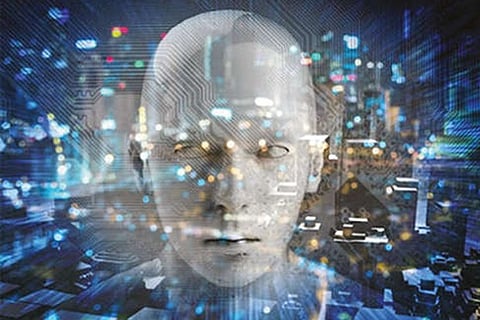

Chennai
As developers continue to refine the technology, the day is not far when AI will become capable of cracking crimes beyond a reasonable doubt.
At present, we are in the testing stage of AI-driven policing. After the testing phase, AI’s game-changing capabilities and operational usefulness will most likely become considerably striking.
In the days to come, we can expect AI to substantially enhance all facets of policing and criminal investigations.
For instance, using AI, police may soon scan DNA from the crime scene to spawn a portrait of the suspect’s face.
A team of Belgian and American scientists with expertise on how genes contribute to distinct features on the human face is developing an algorithm that scans through a database of images and links the DNA found at the crime scene to a person in the database.
The scientists are thus on the brink of creating a potent crime-fighting tool.
Thanks to AI, the sensitivity of DNA testing is improving, making it feasible to detect cases from decades-old degraded DNA samples.
A recent AI software developed for the UK police by digital forensics firm Cellebrite automatically sifts through potential evidence on a suspect’s mobile phone.
The software can analyse pictures and communication patterns, match faces, and cross-reference data from multiple devices, enabling officers to create a comprehensive instantaneous snapshot of how a group of suspects interacted to perpetrate a criminal offence.
The police recently used the software to help identify and capture police officers, including an army general and three politicians indulging in human trafficking in Thailand. Such algorithms are also scrutinising police data to find connections between varied crime cases.
Using AI, police today analyse photographs, CCTV footage, documents and crime logs of criminals. Suppose the image of the suspect is available.
In that case, police feed them into machine learning software that rummages through millions of web pages, including the dark web, to spot the suspect. Law enforcement agencies in the US are using algorithms developed by the University of Southern California to scan the internet to identify victims of human trafficking and the sex trade.
The algorithm has skimmed through over 25 million pages in both the open and darknet and unravelled information to the police, enabling them to track victims. AI algorithms are also helping to prevent human trafficking by identifying containers that are carrying humans.
Facebook, using AI, recently unearthed 9 million images of child nudity and passed them on to the US National Center for Missing and Exploited Children.
Further, the amount of visual information confronting the police when they visit a crime scene is enormous. There is a possibility of concealed evidence or clues in the scene that may not be perceptible to the human eyes. AI is helping police identify such objects and excavate clues leading to the detection of the case.
For instance, if criminals have burgled into a house and decamped with valuables, police routinely take photographs that capture crucial information. Still, some vital clues may not be discernible to the detectives. An AI criminal investigative tool can pick out the peculiarities that assist police in pursuing an investigation on those lines.
Similarly, AI can trace the footprints left in the crime scene by the criminal and match them to specific types of shoes or footwear, such as Nike, Bata, Adidas etc., that police can connect with footprints retrieved from other crime scenes.
Pollen or soil traces left by the criminals in the crime scene can provide vital clues, but matching them ordinarily is time-consuming and laborious, but machine learning can achieve the feat in a few minutes.
Police are also training algorithms to detect anomalous behaviour, protect critical infrastructure and predict crowd behaviour, uncover criminal networks and analyse large volumes of court records to predict potential criminal recidivism.
Researchers are also training algorithms to identify objects like weapons, cars, explosives etc., without human intervention. AI-enabled robots can detect and defuse bombs and protect police officers’ lives.
Further, AI-enabled automated traffic accident detection systems detect and prevent accidents under various weather and lighting conditions. Trained AI algorithms are also helping forensic experts determine the cause and manner of death by interpreting radiological images and medical data.
Many banks and large corporations are employing AI to detect and prevent money laundering and fraud. Banks are halting several financial crimes through deep learning analysis. AI is also helping banks keep a tab on small money transactions that criminals indulge in to hoodwink and cover their tracks.
A case in point is the Russian Laundromat case in which 5000 shell companies, with 440 of them based in the UK, laundered over 63 billion pounds worldwide. Several internet companies like Paypal are deploying AI for fraud detection.
AI is also staving off crimes by detecting packages that contain illicit goods like narcotics, explosives etc., and helping curb terror funding and purchase of explosives for terrorist activities.
Using AI, police can recognise an area or place where the suspect took a random photo or shot a video. AI is also being leveraged for predictive policing, which pinpoints the location of future crimes, thwarting the same by deterrent police presence.
The challenge of an AI algorithm designed to predict crime is that it may undermine the jurisprudential principle that the judiciary should only penalise a person for offences committed rather than for transgressions that an AI application may show may occur in the future.
Visit news.dtnext.in to explore our interactive epaper!
Download the DT Next app for more exciting features!
Click here for iOS
Click here for Android